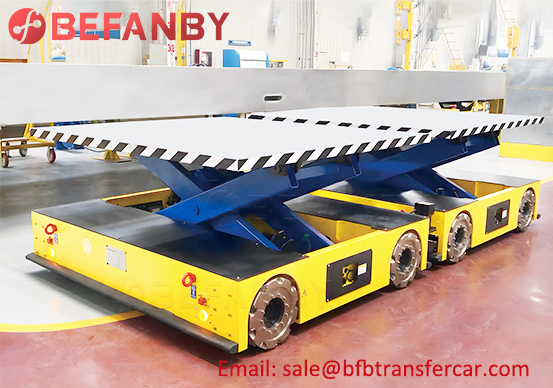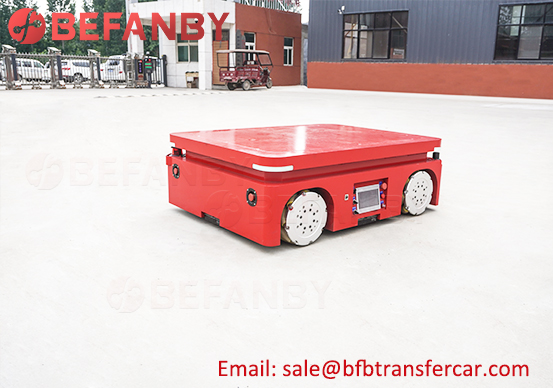Differences Between Mecanum Wheel AGV And Steering Wheel AGV
Structure And Movement Mode
- Structure: Mecanum wheel is usually composed of multiple Mecanum wheels, each wheel is installed at an inclined angle, and there are many small rollers on the wheel hub.
- Movement mode: It can realize all-round movement such as forward movement, lateral movement, oblique movement, rotation, etc., with extremely high flexibility. It can easily adjust the posture and direction in narrow spaces and complex environments without a large turning radius. For example, in the narrow passages in the warehouse, Mecanum wheel AGV can move laterally quickly and place the goods accurately in the designated position.
- Structure: It is mainly composed of one or more steering wheels, which integrate drive motors, steering mechanisms, etc.
- Movement mode: It can usually realize basic actions such as forward movement, backward movement, and turning. When turning, the steering angle of the steering wheel is controlled to achieve turns of different radii. It is similar to the movement mode of traditional vehicles, but it is slightly inferior to Mecanum wheel AGV in flexibility. For example, in a larger logistics site, the steering wheel AGV can drive and turn stably, but in some complex layouts, a larger space may be required to complete the turning operation.


Application Scenarios
1. Mecanum AGV:
- Suitable for occasions with high requirements for space utilization and complex working environment. For example, in an electronic product manufacturing workshop, due to the compact layout of the production line, the AGV needs to be able to flexibly shuttle in a small space. The McLen AGV can easily complete various complex handling tasks.
- It also performs well in some scenarios that require high-precision positioning and multi-angle movement. For example, in an automated warehousing system, the McLen AGV can quickly and accurately take the goods from the shelf and deliver them to the designated location.
2. Steering wheel AGV:
- More suitable for scenarios with higher requirements for carrying capacity and stability. For example, in a heavy machinery manufacturing plant, large parts need to be transported, and the carrying capacity and stability of the steering wheel AGV make it an ideal choice.
- In long-distance transportation and a relatively spacious working environment, the steering wheel AGV can complete the task efficiently. For example, in large logistics centers, steering wheel AGVs can quickly transport goods along planned routes.


Control Difficulty And Cost
1. Mecanum AGV:
Control difficulty: Due to its complex movement mode, the control system of McLennan AGV is relatively complex. The speed and steering angle of each wheel need to be accurately calculated to achieve different movement modes. This places high demands on the algorithm and hardware of the control system.
Cost: The structure of mecanum is relatively complex, and the manufacturing and maintenance costs are high. At the same time, due to the complexity of the control system, the overall cost investment will also increase.
2. Steering wheel AGV:
Control difficulty: The control is relatively simple, and has certain similarities with the control method of traditional vehicles, which is easier for operators to master.


